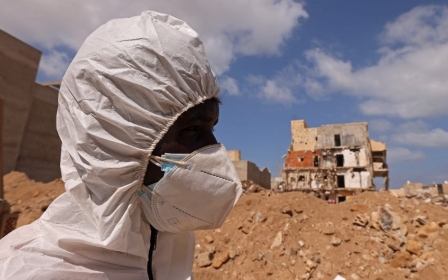US could raise refugee limit in upcoming fiscal year, report says

The Biden administration is contemplating an increase in the quota of refugees that could be welcomed into the United States in the coming year.
The refugee cap determines the maximum number of refugees the US can admit, but the administration isn't obliged to meet this number. Last year, President Joe Biden established the cap at 125,000, CNN reported.
Before the fiscal year concludes, the refugee cap necessitates discussions with Congress. High-ranking officials from the administration are slated to convene with legislators by month's end, CNN reported.
“Welcoming refugees is part of who we are as Americans - our nation was founded by those fleeing religious persecution. When we take action to help refugees around the world and include them, we honour this past and are stronger for it,” Biden said on World Refugee Day on 20 June.
According to recent 2023 statistics, the US has welcomed 51,231 refugees as of 31 August. While that is below the 125,000 cap, the admissions from last October have surpassed the total for the entire fiscal year 2022 by more than double.
New MEE newsletter: Jerusalem Dispatch
Sign up to get the latest insights and analysis on Israel-Palestine, alongside Turkey Unpacked and other MEE newsletters
“In the past 11 months alone, more people have found safety on US soil through this pathway than the previous three fiscal years combined,” Krish O’Mara Vignarajah, the president and CEO of Lutheran Immigration and Refugee Service said, referring to the refugee admissions programme.
In May 2021, Biden committed to "take this action" for global refugees "who are anxiously waiting for their new lives to begin", increasing the yearly refugee intake limit to 62,500. For the subsequent year, he elevated it to 125,000, a significant rise from former President Donald Trump's lowest limit of 15,000.
But in February, USA Today reported that the US took in merely 20 percent of the figure Biden had projected in 2022 - roughly 26,000 individuals, resulting in numerous unoccupied positions for those escaping hazardous situations like conflicts and natural calamities.
The administration has "been pretty clear that they're not necessarily expecting to reach 125,000 for this fiscal year, that it's a lofty goal,” Julia Gelatt, a senior policy analyst at the Migration Policy Institute, told USA Today.
“There's been two years of rebuilding now, and I think our domestic capacity has grown to absorb larger refugee numbers.”
Both "refugee" and "migrant" refer to individuals who move from one place to another, but have distinct legal definitions and implications based on the reasons for their movement.
While all refugees are migrants in the sense that they have all migrated, not all migrants are refugees. The distinction is crucial because refugees have specific rights under international law due to the life-threatening conditions they flee.
Latest data shows that in the Tucson sector, which covers most of Arizona's boundary with Mexico and parts of the Sonoran Desert, border patrol agents have noted an ascent in migrant encounters, averaging around 1,900 daily. This is a jump of 134 percent from the June average of 812.
This surge isn't just a US-centric issue. Individuals are seeking sanctuary in any nation willing to offer protection.
In June, the European Union proposed lending Tunisia over $1bn to bolster its fragile economy, support its public finances, and address the migration issue, with a majority of the financial aid conditional upon the country implementing rigorous economic reforms.
Middle East Eye delivers independent and unrivalled coverage and analysis of the Middle East, North Africa and beyond. To learn more about republishing this content and the associated fees, please fill out this form. More about MEE can be found here.





